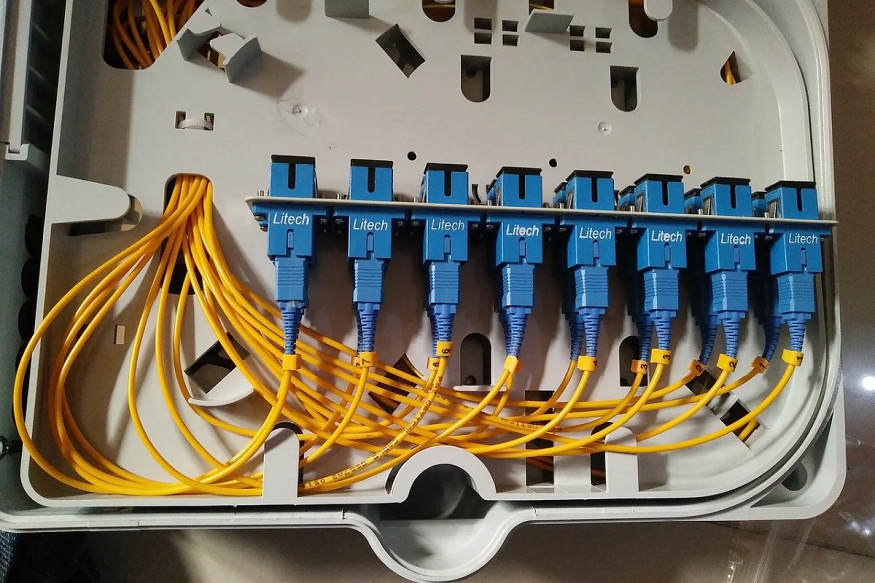In short it is a cable used to transmit the data. It does not use electricity to transmit data, but light pulses from light-emitting diodes (LEDs) or lasers. Fibre optic broadband is related to high transmission and reception speeds and high immunity to interference. This allows stable connections to be established even in difficult weather conditions, such as storms.
In addition, fibre optic cables have a low ping rate, which means that there is a small delay between when one device (e.g. a home computer) performs an action and when it receives a response from another device (e.g. a server). This is particularly popular with those who like to play games online. A particular action in a game appears on the screen faster than when you connect to a server via an electrical signal connection.
How are optical fibres manufactured?
Optical fibre is a generic term for several different types of cable. All fibre optic cables have a common structure consisting of three elements: a core, a sheath and a coating.
The optic fibre core is the element used to transmit data via light waves. Its thickness is 8 to 10 μm (microns), which is slightly larger than the diameter of a human hair.
This part is made of glass, plastic, crystalline semiconductors (e.g. quartz) or synthetic polymers. These chemicals are highly resistant to weather conditions and mechanical damage and are thermally stable.
The sheath is the element used to retain the light wave inside the cable. It is usually made of glass fibres. Its thickness is 125 μm.
The outer layers are the inner and outer sheath. The purpose of this part is to protect the internal structures of the cable from mechanical damage and weather conditions. To be sufficiently durable, the sheathing is made of polyethylene, polyamide or PVC. The thickness of the inner layer is 250 μm and the outer layer is 400 μm.
Optical fibres are also classified according to the structure of the core and the number of fibres it contains. In the first case, a distinction is made between flat cables, ribbon cables and optical fibre cables. The latter include single-mode and multi-mode fibres.
Flat optical fibres are characterised by the fact that the core has a higher refractive index than the sheath. In other words, the light is mainly retained by the core material. Fibre cores have the same property. The difference lies in the material from which they are made. It is either glass or plastic. The latter is only suitable for short distances. The second type is ribbon fibre optics, in which the flow of light waves is limited to two directions only, from the source to the receiver.
The second division refers to the number of mods or cores in the cable. Single-mode optical fibres have a single core, while multimode fibres can have up to a dozen cores.
How optical fibres work
The principle of how optical fibres work is that the light is completely reflected inside, at the boundary between two layers of different refractive indices, the core and the cladding. It is important that the cladding reflects less light than the core, so that the light mainly penetrates the core. The cladding is just another barrier.
The key to the correct scattering of a light wave is to send it at the right angle. For total internal reflection to occur, the angle must be greater than the critical angle. This is why the wave does not penetrate the envelope but remains in the core and is gradually reflected from its top and bottom walls.
Where are optical fibres used?
This technology is used, for example in weapon manufacturing and medicine but most importantly for an average person telecommunications company like Atlantek Fibre Broadband, transmit up to 1000Mb/s connections through them.
This technology is also used to connect civilian and military aircraft. In the case of the military, the security of the transmitted signal is also particularly important. Optical fibres do not emit electromagnetic fields, which makes it difficult to intercept transmissions and steal data.

